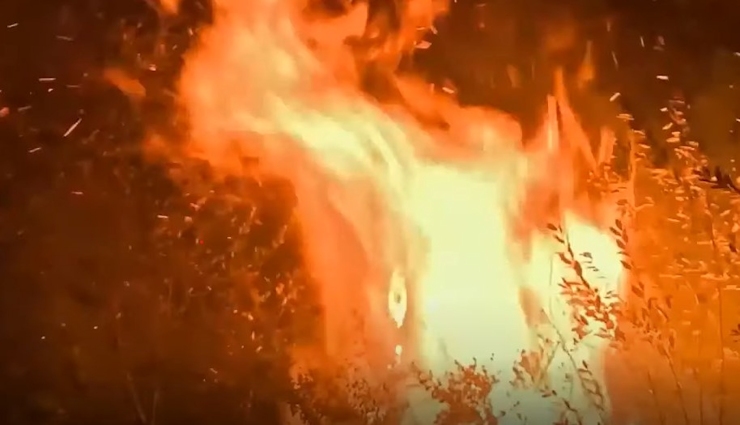
The second “Living With Fire in Marin” webinar developed by FIRESafe MARIN deals with “Evacuation & Warnings—How To Survive a Wildfire.” If you didn’t see the original live presentation, you can view a recording of the session, complete with questions from the audience, on YouTube.
Hosted by Rich Shortfall, Executive Coordinator of FIRESafe MARIN, the presentation begins with terrifying scenes from the Camp Fire and other deadly local conflagrations. Following this harrowing opening, Todd Lando, Battalion Chief of the Central Marin Fire Department, and Dr. Shannamar Dewey, a Camp Fire evacuee and survivor, share lessons learned from the Camp Fire and other firsthand experiences. Among the topics covered by Battalion Chief Lando are:
What you can do now—personal preparedness
- Sign up for Alert Marin for warnings specific to your address
- Sign up for Nixle neighborhood alerts to your smart phone. Text your zip code to 888-777.
- Create an evacuation plan. Download a comprehensive Wildfire Evacuation Checklist.
- Prepare Go Kits for each member of your family and each pet.
Dress for survival. Cotton long pants and shirts with long sleeves offer the best protection against heat and embers. A bandana over an n95 mask also protects against heat and embers. Seal-fit, anti-fog goggles protect eyes. Heavy leather gardening gloves and heavy shoes or boots can be fire-resistant. Add a cap, hat or helmet for extra protection. Get a battery powered AM/FM radio and check the batteries regularly.
Prepare your home for evacuation. Back your car into your driveway for a smooth departure. Close all the doors and windows in your home. Turn on your lights to help firefighters find their way around. Seal vents and remove combustibles. Open gates to provide easy access as well as fire breaks. Fill buckets with water and leave hoses attached and accessible. Put ladders up to your roof. Shut off gas and propane.
Know your designated Temporary Refuge Area, and how to reach it when evacuation is impossible, or if the route is blocked. Ours is the MLK dog park at Bridgeway and Coloma.
And last, but by no means least, Talk to your neighbors to make a community evacuation plan.
Dr. Dewey (an athlete, professor and a survivor of the Camp Fire, the deadliest fire in California history to date) offered these additional wildfire survival and evacuation strategies:
Fallibility of perception. Your brain perceives what it wants to perceive and categorizes what it knows. Advance preparation is the best way to prevent making mistakes and panicking under stress. We should not live in a constant state of fear; instead, we should think ahead and be ready.
Once you receive an evacuation warning, keep your brain on:
- Leave early if it looks like you should leave. Don’t delay.
- Know your local roads but don’t expect to know the right way. Follow instructions.
- Stay in your car! Everything you need to survive is in your car, such as air filtration, a radio and—hopefully—a wildfire evacuation go kit. Keep your headlights on, windows up, and air conditioning on. It is unlikely that your car will explode in a fire, so you’re safer inside than out. Traffic is not deadly; stay on the pavement. If you can, carpool to reduce traffic.